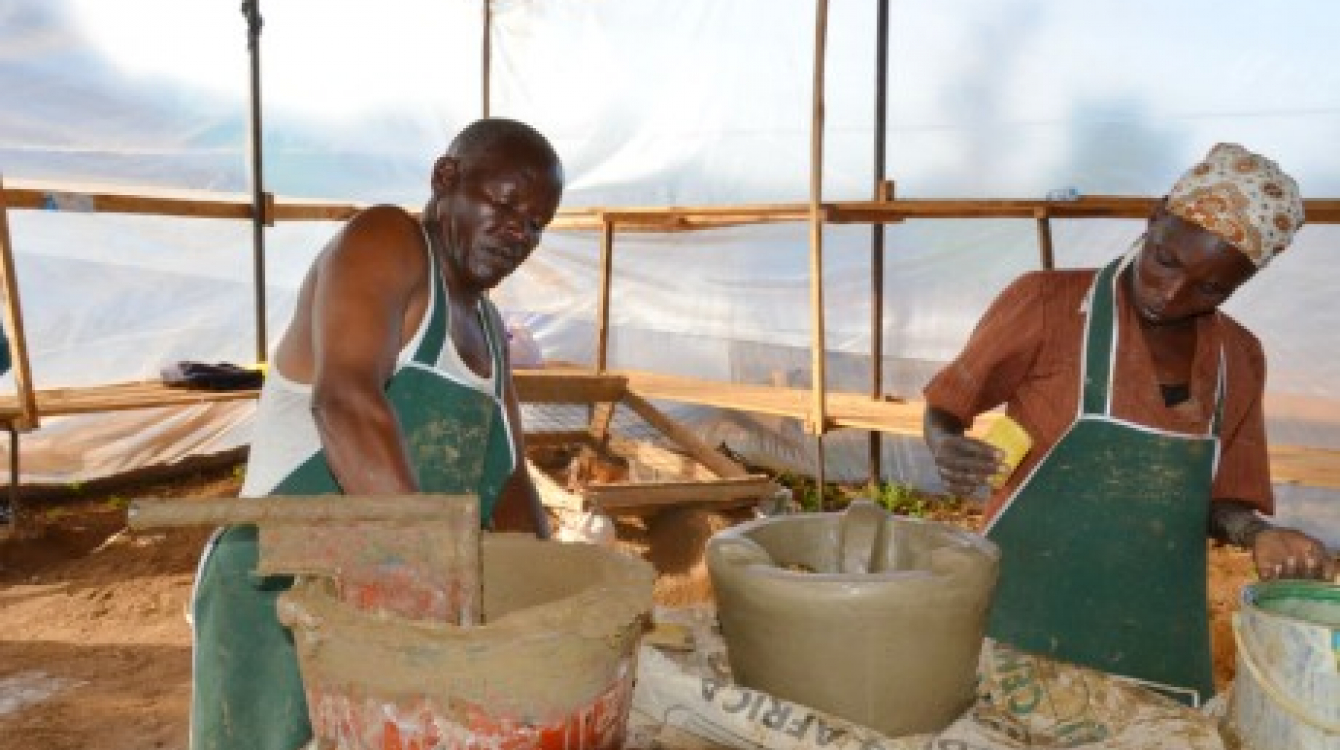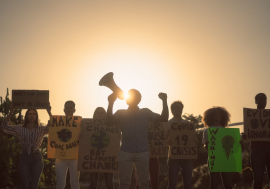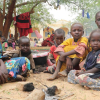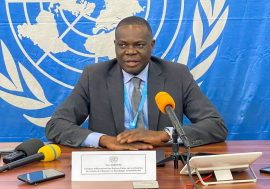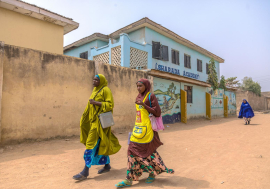New goats, stoves, and farming methods contribute to resilience
New goats, stoves, and farming methods contribute to resilience
For over 6 years, Rose Mueni, an owner of a popular roadside food kiosk in the small town of Kyuso, Kenya, spent most of her income on purchasing firewood and charcoal to prepare food for sale. Although she had a continuous chain of customers from the busy trading center, the high overhead meant she could barely sustain her business.
“The cost of buying firewood would keep increasing,” she says. “Most of the trees in our neighborhood had already been cut, so we only relied on the market price of the traders, which left us with little savings.”
Residents rely on charcoal for energy, and significant deforestation has taken place to meet the demand, placing additional pressures on an already-fragile environment—as trees are cut for fuel, the soil is eroded, leaving the land increasingly unproductive and also more susceptible to damaging storms and droughts.
Rose, like many of her neighbors, relied heavily on charcoal to run her business, and was finding costs rising as wood grew scarce. But just as she was contemplating closing shop, she and other members of her local Ndatani women’s group learned of a cooking technology that would require significantly less firewood—energy efficient cook stoves, which both retain more heat than traditional, 3-stone stoves while also using up to 50 percent less firewood.
The group was introduced to the stoves by the UNDP-funded Kenya Adaptation to Climate Change in Arid Lands (KACCAL) project, which targeted Mumoni and Kyuso districts to help poor rural communities vulnerable to recurrent drought and to the long-term impacts of climate change.
Since incorporating these stoves, Rose’s business has boomed, and she has seen improvements in many different aspects of her life—she can now afford to take her children to school and to meet other daily needs. She plans to move her business from its current makeshift structure to a more permanent structure. Indeed, with stoves installed in the home of every member, the Ndatani group has had enough free time to set up a workshop and kiln for making stove liners to sell.
KACCAL also worked to help communities diversify their livelihood options to make them more resilient against droughts. Wendo wa syana, a group that started a micro-saving scheme and raised capital to rear goats, was given US$4,800 from KACCAL so that each of the group’s 20 members could purchase 3 hybrid dairy goats (which are more tolerant of droughts). These goats provide milk for the households, surplus milk for sale and have also been used for breeding.
Another group of farmers, kanini kaseu, had been experiencing crop failure for years due to recurrent droughts.
“We had given up on farming,” says Roselyn Mutua, a member of kanini kaseu. “Prolonged drought would dry up our crops before harvest. Many of us became destitute.”
But with support from KACCAL, kanini kaseu’s 20 members adopted new farming methods: They purchased water pumps to direct water from a nearby seasonal river to the farms, watering the crops via drip irrigation. They also set up large water tanks that would store water in times of plenty and serve as crucial resources during dry spells. Thanks to these new methods, members can now grow a wider variety of food crops—including tomatoes, drought-resistant green grams, kale and spinach—to ensure they have access to food during even the leanest periods.
Overall, some 12,000 households in 15 pilot sites have benefited from KACCAL, and over 80,000 seedlings for fruit trees and other multi-purpose tree species have been planted, helping reverse deforestation as well as produce fruit for better nutrition and income generation.
Such climate mitigation and adaptation efforts have given these communities a new lease on life: sustainable livelihoods are increasingly common, and residents are constantly working to discover more ways to make their communities resilient against the effects of climate change.


